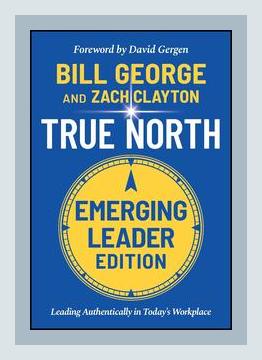Leadership and ManagementCrisis Management
Introduction
“Leadership in a Time of Crisis” by Ram Charan delves into effective strategies for leaders to navigate crises successfully, manage conflicting agendas, and inspire teams toward exceptional performance. Charan leverages his extensive experience in business consulting to provide a comprehensive guide tailored to the unprecedented challenges that arise during crises.
1. Understanding the Nature of Crisis
Charan begins by defining a crisis as an unpredictable, high-impact event that demands swift and strategic responses. He emphasizes the necessity for leaders to stay calm and composed to provide a beacon of stability.
Actionable Advice:
– Stay Informed: Regularly monitor relevant information sources and updates to remain knowledgeable and ready to adapt.
Example:
Charan describes how during the financial crisis of 2008, Goldman Sachs’ leadership team held daily meetings to stay updated with market changes and policy updates, which enabled them to respond effectively.
2. Establishing Clear Priorities
In a crisis, conflicting agendas can create chaos. Charan advises leaders to prioritize actions that address immediate threats and ensure organizational survival.
Actionable Advice:
– Prioritize Critical Functions: Identify and focus on the most critical operations that must be maintained to ensure the continuity of the organization.
Example:
During the COVID-19 pandemic, many companies, like Johnson & Johnson, prioritized the health and safety of their employees and the continuous production of essential goods, while putting lesser priorities on hold.
3. Effective Communication
Transparent and frequent communication is crucial. Charan stresses the importance of keeping all stakeholders—employees, customers, and partners—informed to maintain trust.
Actionable Advice:
– Regular Updates: Schedule regular briefings and updates that communicate both short-term plans and long-term strategies.
Example:
Microsoft CEO Satya Nadella communicated frequently with employees about the company’s response to COVID-19, including support measures for remote work, which helped alleviate uncertainty and maintain morale.
4. Embracing Agility
Crisis conditions demand flexibility and the capacity to pivot swiftly. Charan underscores the need for organizations to be able to adjust their strategies as the situation evolves.
Actionable Advice:
– Build Agile Teams: Form cross-functional teams capable of rapid problem-solving and decision-making.
Example:
Procter & Gamble quickly reallocated resources to increase production of sanitizers and other essential products during the pandemic, demonstrating agility in responding to new demands.
5. Decisive Decision-Making
Indecision can exacerbate crisis situations. Leaders must make timely and well-informed decisions, even if they are difficult.
Actionable Advice:
– Empower Decision Makers: Delegate authority to teams and individuals who are closest to the situation and trust them to act swiftly.
Example:
During Hurricane Katrina, Walmart’s emergency management team made quick decisions to allocate resources and deliver essential supplies to affected areas, demonstrating decisive action.
6. Fostering Collaboration
Charan advocates for a collaborative approach, where leaders bring together diverse perspectives and leverage collective intelligence to address the challenges at hand.
Actionable Advice:
– Facilitate Brainstorming Sessions: Encourage open discussions and idea-sharing sessions to harness diverse viewpoints.
Example:
The collaboration between Tesla and Medtronic to produce ventilators during the COVID-19 crisis illustrated how pooling expertise from different industries can lead to innovative solutions.
7. Maintaining Employee Morale
A crisis can impact employee morale negatively. Charan highlights the need for leaders to inspire and motivate their teams, even during tough times.
Actionable Advice:
– Provide Support Systems: Offer mental health resources and ensure that employees feel valued and supported.
Example:
Airbnb implemented a series of employee support initiatives, including counseling services and virtual team-building activities, to maintain workforce morale during the pandemic-related downturn.
8. Preparing for Post-Crisis Opportunities
Charan advises leaders to think beyond immediate survival and prepare for opportunities that may arise post-crisis. This forward-thinking mindset can help organizations not only recover but come out stronger.
Actionable Advice:
– Develop a Recovery Plan: Outline potential growth areas and develop strategies to capitalize on them once stability returns.
Example:
Nike used the lockdown period to enhance their e-commerce platform, which positioned them for growth when retail began to recover, showing the importance of preparing for post-crisis opportunities.
9. Learning from the Crisis
Reflecting on the crisis and learning from it is critical for improving future responses. Charan encourages leaders to conduct thorough reviews and implement lessons learned.
Actionable Advice:
– Conduct After-Action Reviews: Hold debrief sessions to analyze what worked, what didn’t, and how to improve.
Example:
CISCO Systems conducted extensive reviews after the network outage caused by the Slammer worm, using the lessons to enhance their cybersecurity measures.
10. Leading with Empathy
Empathy is vital in crisis leadership. Charan points out that understanding and addressing the concerns of employees and stakeholders can build stronger relationships and loyalty.
Actionable Advice:
– Show Genuine Concern: Listen actively to the challenges your employees and customers face, and act on their feedback.
Example:
Starbucks CEO, Kevin Johnson, sent personalized messages to employees and customers, showing empathy and addressing concerns during the COVID-19 pandemic, which bolstered community trust and loyalty.
Conclusion
“Leadership in a Time of Crisis” by Ram Charan offers a comprehensive guide filled with practical advice and real-world examples. The key to navigating a crisis lies in informed, agile, and empathetic leadership that prioritizes clear communication and decisive, collaborative actions. Leaders who can effectively manage conflicting agendas and inspire their teams will not only survive but can thrive in the aftermath of a crisis.
